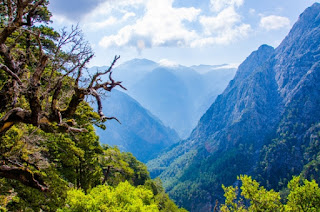Christopsomo is a cake that is typically served on Christmas Day in Greece.
Preparing this bread as a Christmas treat is something that is said to
help bring about the health and well being of all members of the
household into the coming year. However, in order for this to hold true,
only the best, most expensive ingredients are used. Legends aside, this
bread is also delicious. Once you start making it, you’ll be eager to
turn it into an annual tradition!
Add butter and eggs to the yeast mixture and beat on medium speed using an electric mixer until the ingredients are well combined. Slowly beat in the rest of the sugar, 1 cup of the flour, and the aniseed until well combined. Turn off the mixer and stir in the remainder of the flour with a wooden spoon or your hands until dough is smooth and isn’t sticky.
Knead for five minutes in the bowl. Spray a large bowl with cooking spray and add the dough. Spray the top of the dough with cooking spray and cover it with a towel. Let the dough rise until doubled, which should take about two hours.
Punch down the dough to let out the air. Let stand for five minutes and then knead again for about three minutes to release the air bubbles. Form the dough into a loaf, spray a baking sheet with cooking spray, and place the dough on the sheet. Let stand for about an hour on the counter, or until the size of the loaf doubles.
Preheat the oven to 350 Degrees Fahrenheit. Brush the loaf with the whipped egg white. Place in the center of the oven and cook for 35 minutes, or until the loaf is golden brown.
(Source: thegreekobserver)
Greek Christmas Bread (Christopsomo) Recipe Ingredients:
- 1/2 cup warm water (108 – 112 Degrees Fahrenheit)
- 1 package active dry yeast
- 1/3 cup plus 1 tablespoon granulated sugar
- 6 tablespoons butter, softened to room temperature
- 2 large eggs
- 3 1/2 cups all-purpose flour
- 2 teaspoons aniseed, crushed (or mahleb, if you have it)
- 1/2 teaspoon salt
- 1 large egg white, lightly beaten
Instructions to Make Greek Christmas Bread:
Add water, yeast, and 1 tablespoon of the sugar to a medium sized bowl and stir gently with a wooden spoon. Let sit until the mixture starts to foam, which should take about ten minutes.Add butter and eggs to the yeast mixture and beat on medium speed using an electric mixer until the ingredients are well combined. Slowly beat in the rest of the sugar, 1 cup of the flour, and the aniseed until well combined. Turn off the mixer and stir in the remainder of the flour with a wooden spoon or your hands until dough is smooth and isn’t sticky.
Knead for five minutes in the bowl. Spray a large bowl with cooking spray and add the dough. Spray the top of the dough with cooking spray and cover it with a towel. Let the dough rise until doubled, which should take about two hours.
Punch down the dough to let out the air. Let stand for five minutes and then knead again for about three minutes to release the air bubbles. Form the dough into a loaf, spray a baking sheet with cooking spray, and place the dough on the sheet. Let stand for about an hour on the counter, or until the size of the loaf doubles.
Preheat the oven to 350 Degrees Fahrenheit. Brush the loaf with the whipped egg white. Place in the center of the oven and cook for 35 minutes, or until the loaf is golden brown.
(Source: thegreekobserver)












